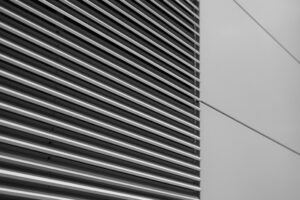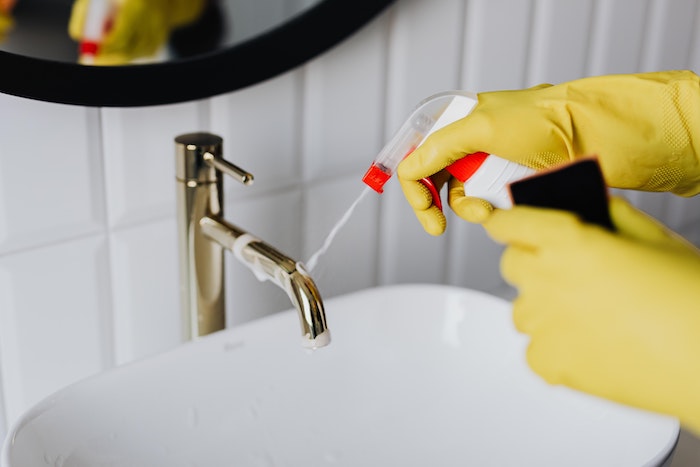Creating an Eco-Friendly Home: 3 Crucial Ways to Elevate HVAC Efficiency
 Heating and cooling account for around half of a typical home’s energy use, according to the U.S. Department of Energy. While this highlights the importance of high performance heating, ventilation, and air conditioning (HVAC) systems, there are various ways that homeowners can effectively reduce their impact on the environment even further. By choosing the right system from the start to the innovative (and surprisingly simple) ways that small home upgrades can make a difference, homeowners can significantly enhance HVAC efficiency while successfully contributing to an environmentally-conscious lifestyle.
Heating and cooling account for around half of a typical home’s energy use, according to the U.S. Department of Energy. While this highlights the importance of high performance heating, ventilation, and air conditioning (HVAC) systems, there are various ways that homeowners can effectively reduce their impact on the environment even further. By choosing the right system from the start to the innovative (and surprisingly simple) ways that small home upgrades can make a difference, homeowners can significantly enhance HVAC efficiency while successfully contributing to an environmentally-conscious lifestyle.
Exploring innovative systems from the get-go
Selecting the right HVAC system from the get-go is ideal, especially when aiming to keep things as eco-friendly as possible. Whether you’re looking for your first system or you’re aiming to replace an out-of-date unit, the number of options available can be overwhelming. One EcoWatch article by Kristina Zagame dives into the various different types of systems out there, noting that a shift in consumer demand has resulted in the availability of those that are more energy efficient and sustainable. As such, this opens the realm of HVAC systems to some truly unique options. Geothermal heat pumps, for instance, are just one environmentally-conscious choice explored in the article — these systems work to utilize the temperature of the Earth in order to bring hot or cold air to the home. According to EcoWatch, these systems can supply hot water as well. Furthermore, it’s noted that in the winter, geothermal systems pull cool air from your home, running it through pipes in order to warm the air underground (then ultimately returning the warm air back up into the home). The process is then reversed during warm months, working to efficiently provide cooler air in the home.
Often overlooked, routine maintenance is critical
When aiming to run a more environmentally-conscious household, routine maintenance on your HVAC system is essential, and encompasses a variety of tasks that can easily get overlooked by homeowners. Scheduling a professional inspection twice a year (once in the spring and once in the fall) is always a great idea, though there are several tasks that can be done on your own in the meantime. For example, routinely changing the filters in order to remove dust and hair, and keeping clutter away from the unit both inside and out. Both of these simple tasks enable your HVAC system to work more efficiently all the while preventing it from working harder (and costing more to run).
Performing a visual inspection can also be a simple way to maintain your HVAC system, as doing so can alert you to any concerns that need to be addressed by a professional. HVAC short cycling, for instance, is one common issue that plagues many homeowners, and has the potential to decrease the eco-friendliness and overall efficiency of your system. HVAC short cycling becomes a reality when a heater or air conditioner turns on and off frequently without completing a full cycle. Unfortunately, this issue will lead your HVAC system to experience increased wear and tear, ultimately resulting in higher utility bills as well as an inefficient system all around. Causes of HVAC short cycling range greatly, from clogged air filters to thermostat issues, so having a professional look at your system is ideal when determining the underlying cause. Maintenance plays a key role in successfully address HVAC short cycling — for example, changing air filters and the installation of smart thermostats can prevent the issue from recurring.
Small home upgrades unveil powerful effects
One PR Newswire article provided by Family Features Editorial Syndicate identifies several ideas that can be implemented within the home. A smart thermostat, for example, can work to optimize your HVAC system and can be controlled remotely via smartphone for added convenience. Smart thermostats work to minimize your energy consumption by cooling the home only when necessary — through automatic adjustments, you can rest assured that your home is cool while maintaining the optimal temperature around the clock.
Adding window treatments as well as insulation to the home are additional ways to supplement the effectiveness of your home HVAC system as well. For instance, PR Newswire points out that shades, blinds, or curtains work to block out sunlight and minimize heat gain during the day, which can impact how hard your HVAC system needs to work. Proper insulation can also make a big difference, explains Michael DiMartino, senior vice president of installations at Power Home Remodeling. “Insulation helps to stabilize temperatures throughout your home, prevent structural damage to the foundation that can be caused by excess heat and moisture, and it helps to prolong the life of your HVAC system,” DiMartino explains.
A home HVAC system may seem like an automatic strain on your pocket and the environment, though it doesn’t have to be — especially when your system is working as efficiently as possible. From choosing an environmentally-friendly and sustainable system from the get-go to making home improvements that supplement HVAC efficiency, you can have peace of mind in knowing that your system is as eco-friendly as possible.


